Date of Birth: 31 October 1875
Place of Birth: Nadiad, Bombay Presidency (present day Gujarat)
Parents: Zaverbhai Patel (father) and Ladbai (mother)
Spouse: Jhaverba
Children: Maniben Patel, Dahyabhai Patel
Education: N. K. High school, Petlad; Inns of Court, London, England
Association: Indian National Congress
Movement: Indian Independence Struggle
Political Ideology: Moderate, Right-wing
Religious Beliefs: Hinduism
Publications: Ideas of a Nation: Vallabhai Patel, The Collected Works of Vallabhbhai Patel, 15 volumes
Passed Away: 15 December 1950
Memorial: SardarVallabhbhai Patel National Memorial, Ahmedabad, Gujarat
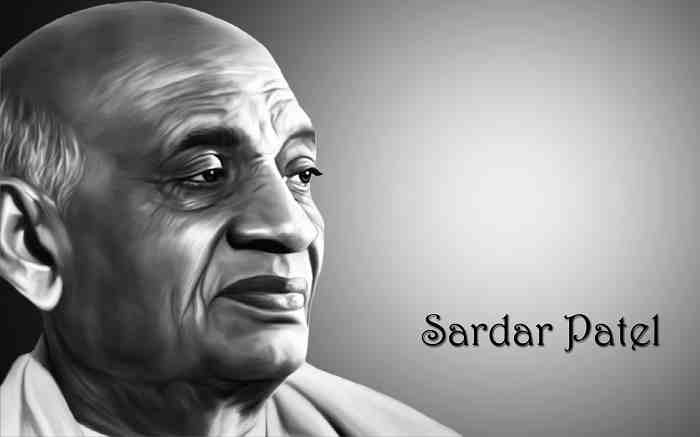
Vallabhbhai Patel was an Indian barrister, statesman and a prominent leader of the Indian Independence movement. Popularly known as Sardar Patel and The Ironman of India, he was the first Deputy Prime Minister and the first Home Minister of independent India.
After studying law in England, he practiced law in Ahmedabad. Initially not much interested in the independence movement, a meeting with Mahatma Gandhi in 1917 changed his views. Leaving his law-practice, Patel committed himself to the Independence struggle. He received the title of Sardar (leader/Chief) after successfully leading the agitation of the farmers of Bardoli (1928). His greatest contribution to the post-independence India was the integration of 565 princely states, and creation of All-India Services. In 1991, India’s highest civilian award, Bharat Ratna was conferred upon him posthumously.
Childhood & Early Life
Sardar Patel was born Vallabhbhai Jhaverbhai Patel in 1875, at Nadiad, Gujarat, British India, in a middle-class agricultural family of Lewa Patidar community. There is no official record of his date of birth, but October 31 is mentioned as his date of birth on his matriculation exam papers. He was the fourth of six children of Jhaverbhai Patel and his wife, Laadbai. His father had participated in the 1857 Mutiny, in the army of Rani Laxmi of Jhansi.
Growing up in a traditional Hindu family, his early childhood was spent on family’s agricultural fields at Karamsad. By late teens, he completed his middle school education at Karamsad. In 1891, he was married to Jhaverba when he was 16. At 22, he completed his matriculation from a high school in Nadiad/Petlad in 1897.
Patel aimed to work and collect necessary money to go to England to study law. After schooling, he studied by borrowing law books and passed the District Pleader’s examination. In 1900, he started his law practice at Godhra. He brought his wife, Jhaverba, from her parent’s place, and together, they set up a home. They had two children: a daughter, Maniben (B.1904), and a son, Dahyabhai (b.1906).
With his hard work and dedication, Patel became a capable lawyer. During a plague epidemic, he contracted the disease while nursing a friend. Leaving his family, he went to Nadiad to recuperate.
In 1902, Patel moved to Borsad (Kheda district) to practice law, where he successfully handled challenging court cases. With his law practice, he saved enough money to go to England to study law. The ticket bore the name ‘V.J. Patel,’ which were also the initials of his elder brother, Vithalbhai Patel. After learning about his elder brother’s wish to study in England, Vallabhbhai decided that his elder brother should go first, so as to maintain family’s reputation.
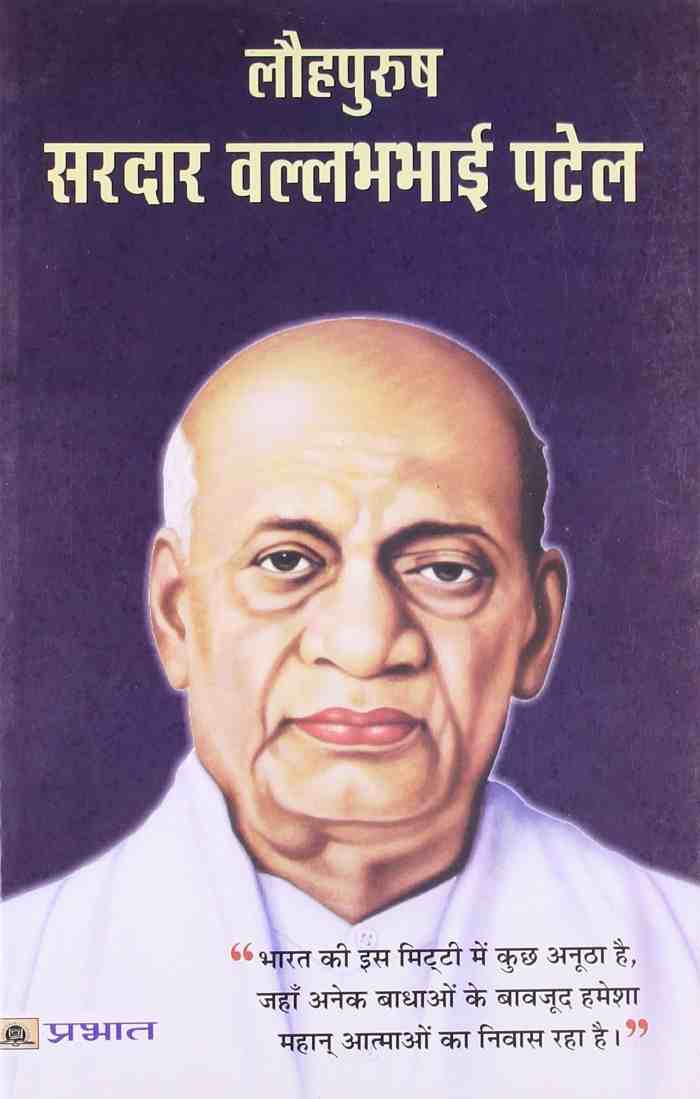
In 1909, Patel’s wife took seriously ill, and was operated upon in a hospital in Bombay/Mumbai. However, she didn’t recover from it. When she died, Patel was cross-examining in a court in Anand. He received a note bearing the news, read it, but continued with his case without giving any indication till the end of the case. He did not marry again.
At 36, Patel went to England (in 1910), to study law at the Middle Temple Inn. With his hard work, he not only completed the course months earlier, but also achieved the top place in Roman law.
Patel returned to India in February 1913, and established a successful practice at Ahmedabad. As an eminent barrister in criminal law, he led a westernized lifestyle. Known for his courteous, well-mannered behavior, western clothes, and expertise in the game of bridge, he wasn’t interested in politics. However, a meeting with Mahatma Gandhi in 1917 changed his views. Inspired by Gandhi’s ideologies, Patel became his follower. In 1917, Patel was elected the sanitation commissioner of Ahmedabad.
Role in the Indian National Movement
Joining India’s independence movement, Patel motivated the people of Borsad in September 1917 to join Gandhi’s demand for independence. Patel joined the Indian National Congress’ Gujarat Sabha as secretary and helped in Gandhi’s campaigns.
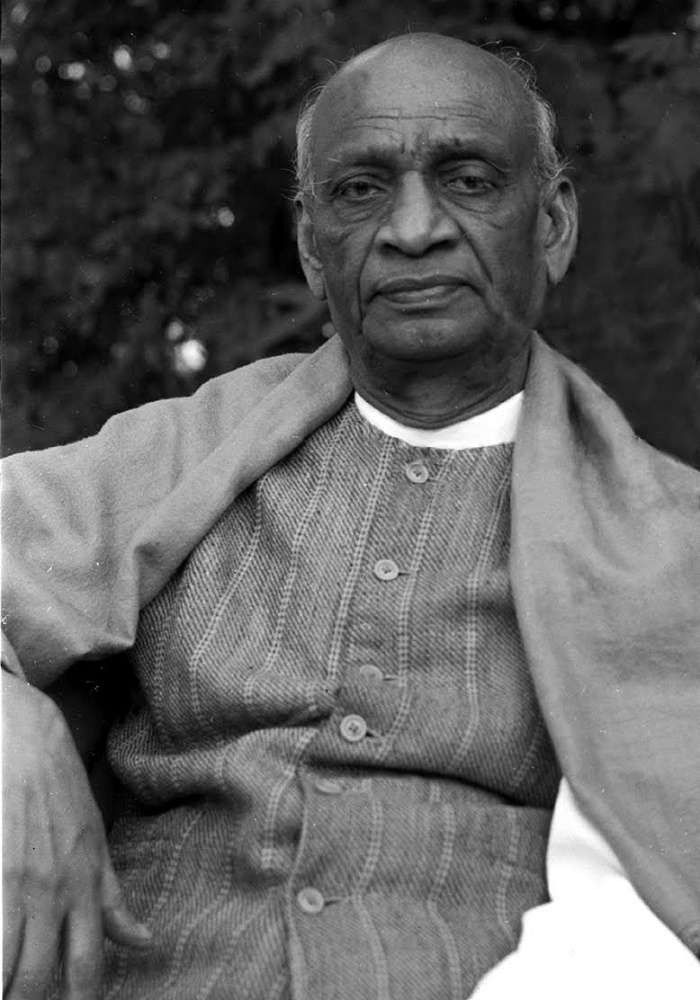
Kheda district faced a plague epidemic in 1917, followed by a famine in 1918. Despite crop failures, the British government refused to exempt the land revenue. Patel led the agitation of the farmers and Zamindars to get tax exemption. During the 3-month long campaign, he came very close to Gandhi. Visiting several villages, he motivated farmers to revolt against the government without any violence by not paying taxes. Several farmers and volunteers were arrested, lands were seized and people faced harassment, but the resistance effort paid off and the government was forced to exempt the taxes.
In 1920, Patel was elected President of the Gujarat Pradesh Congress Committee (the post he served till 1945). Leaving his successful legal practice, he joined Gandhi’s Non-Cooperation Movement in 1920. He and his children burned their western clothing in bon-fires organized to burn and boycott British goods. He started wearing Indian attire made of Khadi (Indian handloom cotton). He traveled from place to place and recruited 3,00,000 members and collected a fund of Rs.1.5 million.
In 1923, while Gandhi was in prison, Patel led the Satyagraha Movement in Nagpur, when the British banned hoisting of Indian flag. He succeeded in obtaining the consent to hoist the flag publicly, and also got the prisoners released (arrested for hoisting the flag).
From 1924-1928, Patel was chosen the President of the municipal committee of Ahmedabad. During these years, he implemented several sanitation, water supply, administration and town planning programs. He also worked towards several social reforms, including prohibition of untouchability, casteism, alcoholism, etc.
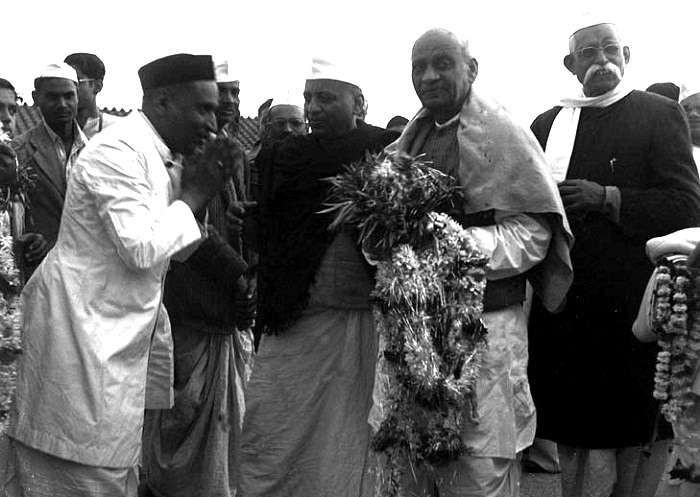
In 1928, the government raised the land revenue at a time when the farmers in Bardoli taluka of Surat district were already facing famine. Patel toured the villages to gauge the condition. Before launching a Satyagraha, he forewarned the villagers of the difficulties and asked them to maintain non-violence and unity.
As per Patel’s call for a non-cooperation movement on February 12, 1928, the farmers refused to pay the taxes demanded by the government. The government responded by arresting farmers and confiscating their lands, but the farmers didn’t give-in. Many Satyagrahas were undertaken all over Gujarat to express solidarity and sympathy with the Bardoli farmers. The agitation continued for 6 months, while Patel carried on his negotiations with the government. His efforts bore fruit in August and the administration returned the seized lands and the implementation of increased tax was postponed. The success of the Bardoli Satyagraha earned him the name Sardar or chief.
In 1930, Gandhi gave the call for Dandi March and Salt Satyagraha to protest against the salt tax. As one of the leaders, Patel was arrested before the Dandi March on March 7, 1930. He was tried without any witnesses or lawyers. After Gandhi’s arrest, the agitation intensified demanding release of the two leaders. Patel was released in June and took on the responsibilities as the Congress president in absence of Gandhi. However, he was arrested once again.
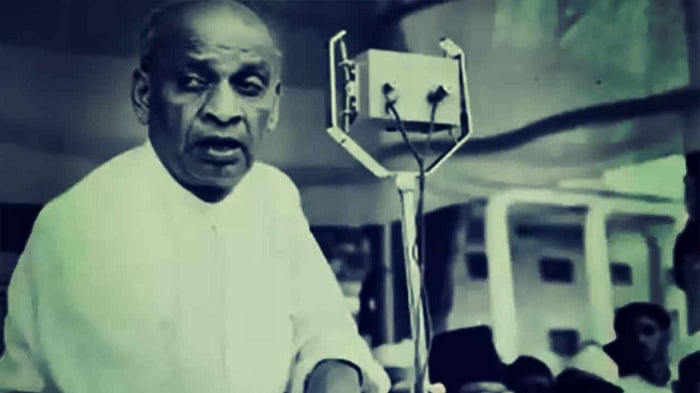
Image Credit: mymoneybazar.com
Patel was elected the President of the 46th session of the Indian National Congress at Karachi, in March 1931. Congress approved the Gandhi-Irwin Pact, though Nehru and Bose didn’t totally agree with the terms of the pact. The same day, Bhagat Singh and associates were executed in Lahore. The Karachi session of the Congress coped with a lot of turmoil. Thereafter, the Indian National Congress agreed to participate in the Round Table Conference in London. However, the Conference didn’t succeed and subsequently Gandhi, Patel and several other leaders were arrested. Patel was with Gandhi in Yerwada Jail from January 1931 to May 1933. When Gandhi protested against allocation of separate electorates for untouchables by starting fast-unto-death, Patel looked after him. Later, he was shifted to Nasik Jail for one year, and was released in 1934.
As per the Government of India Act 1935, the Congress decided to participate in the elctions to provincial legislatures. Patel played an important role in raising funds and selecting candidates for these elections. The Indian National Congress won in 7 out of 11 provinces. As the chairman of the Congress Parliamentary Sub-committee, he guided the ministries.
At the start of WWII, the Viceroy declared India as an ally of England. The Congress ministries resigned in protest and leaders courted arrests. Gandhi gave call for Individual Civil Disobedience. After being arrested in November 1940, Patel was later released on August 29, 1941, due to ill-health.
On August 8, 1942, the All India Congress Committee launched the Quit India Movement. Many prominent Congress leaders, including Patel, were arrested on August 9, 1942. Patel was arrested and confined at the Ahmednagar Fort for 3 years. All Congress leaders were released in 1945, after the end of WWII.
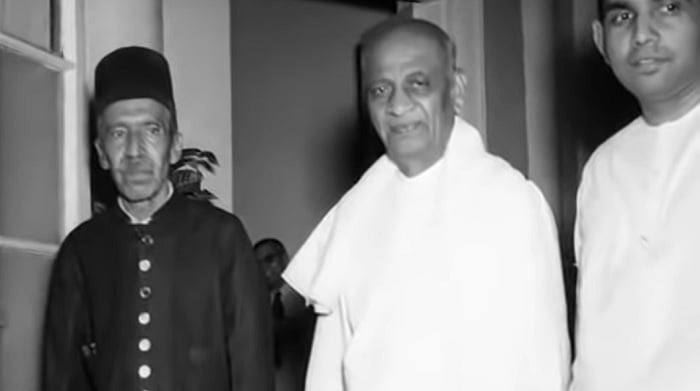
Sardar Vallabhbhai Patel & the Partition of India
The British government called for negotiations with the Indian National Congress for the independence of India. The Muslim League leader Jinah’s separatist movement put a roadblock in front of the Congress leaders. Initially, Patel was against the partition of India. However, he realized that these communal conflicts could lead to a weak government at the center, so he agreed for creating a separate dominion (based on religious preferences). Gandhi and other Congress leaders were totally against partition. He discussed with Gandhi at private meetings, convinced him that the Congress-Muslim League alliance government would not work, and would lead to a civil war in the country.
At the time of independence, the partition of British India into India-Pakistan resulted in large-scale communal riots. Patel worked tirelessly to establish peace, and provide safety and essentials to the refugees. He went to border areas to organize relief and set up refugee camps. He also called in the army (South Indian regiments) to bring the situation under control.
Contribution to Post-Independence India
Patel was the first Deputy Prime Minister and the first Home Minister of Independent India. British had given two choices to the Indian Princely states – they could either join India or Pakistan, or stay independent. This created a lot of uncertainty. As the home minister, Patel had a herculean task to convince the princely states to join India. With his tactful negotiation, he succeeded in integrating over 560 states to the Indian Union. There were a few states like Junagadh, Jammu & Kashmir, and Hyderabad, which did not acquiesce/comply. Without these states joining the Indian Union, the country would’ve been disjointed, so Patel used force to deal with them. Because of his efforts, today India stands as an integrated nation.
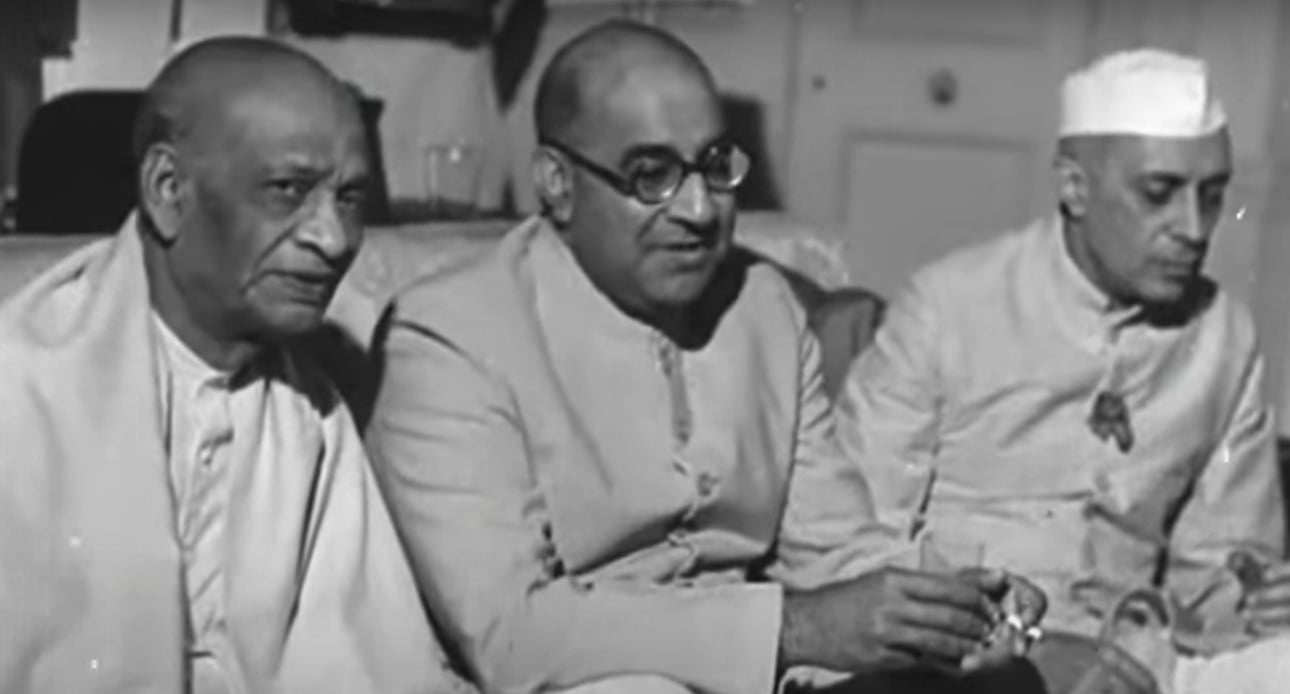
In September 1947, when Pakistan tried to invade Kashmir, Patel asked the rulers of Kashmir to accede to India, after which he ordered the army to drive away the invaders and re-claim the invaded territories.
Patel was the driving force behind creating the All India Services, which he knew would be essential for providing a firm infrastructure to the new nation. He was also an important part of the Constituent Assembly of India. The Somnath Temple in Saurashtra was restored under his supervision.
Influence of Gandhi
Gandhi’s life and his principles had a huge effect on Patel’s life and ideologies. When Gandhi gave a call for the Non-cooperation Movement, Patel left his flourishing practice and dedicated himself to the independence struggle. He also supported and followed Gandhi’s path of non-violence, and stood resolutely alongside Gandhi, even when other leaders did not agree with some of Gandhi’s ideas. Gandhi’s Civil Disobedience movement faced opposition, but Patel supported him. On Gandhi’s suggestion, he took back his candidacy for the election of the president of the Indian National Congress, in 1946.

Death & Legacy
Patel suffered a heart-attack after Gandhi’s assassination in 1948. His health began to deteriorate in the latter half of 1950. In December, he was taken to Bombay. He had a second heart-attack, and died on December 15, 1950.
In 1980, the Sardar Patel National Memorial was opened at Moti Shahi Mahal, Ahmedabad. A major dam on River Narmada (Gujarat) was dedicated to him as Sardar Sarovar Dam. The international airport in Ahmedabad and several academic institutions are named after Patel.
He was posthumously awarded India’s highest civilian award, Bharat Ratna, in 1991.
In 2014, it was announced that the nation would annually celebrate Patel’s birthday, October 31st, as Rashtriya Ekta Diwas or National Unity Day.
Statue of Unity
World’s tallest statue, the 182-meter (597 feet) tall Statue of Unity, was dedicated to him on October 31, 2018. It is approximately 3.2 km away from Sadhu Bet near Vadodara, Gujarat. The Statue of Unity and its related structures are spread over an area of about 20000 square meters. Built at an approximate cost of 29.8 billion rupees ($425m), the entire complex is surrounded by an artificial lake.



